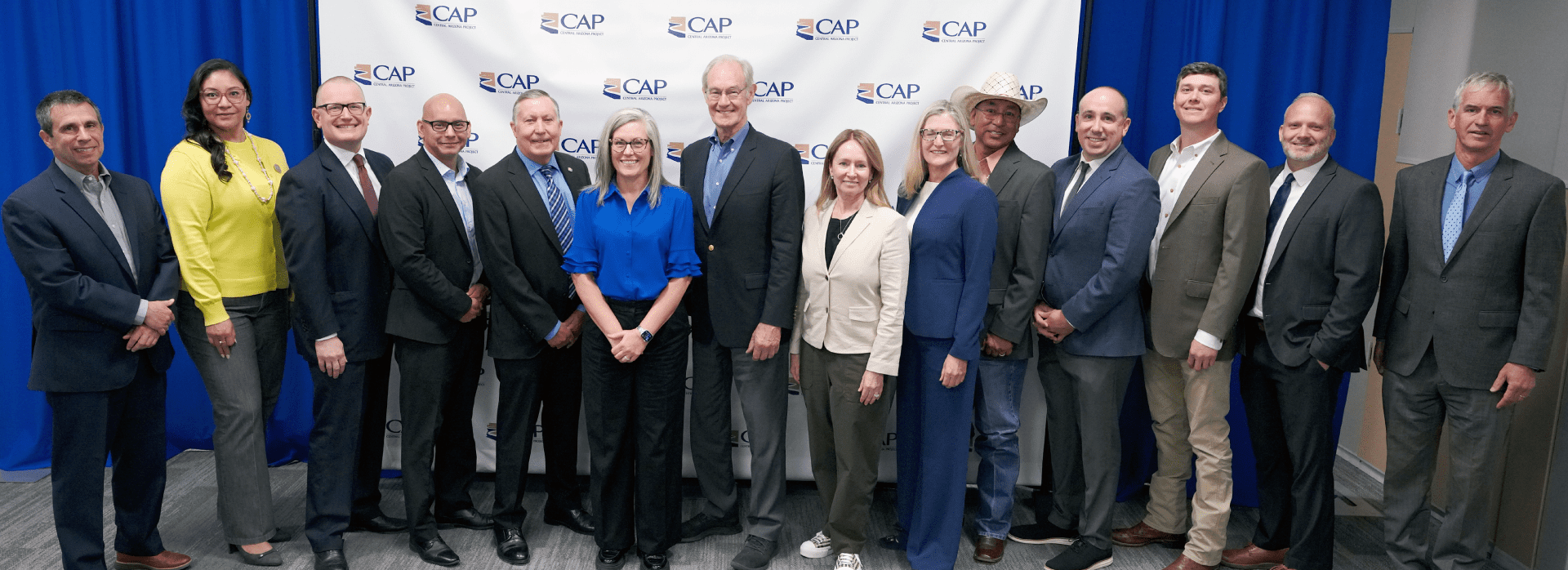- Gov. Hobbs led a Colorado River water strategy session Tuesday.
- CAP’s 336-mile canal system was spotlighted in a helicopter flyover.
- Arizona is urging Upper Basin states to share in the water reductions.
- A post-2026 agreement hinges on consensus among seven states.
Friday, May 16, 2025 — In a show of unity during a critical moment for Colorado River negotiations, Arizona Governor Katie Hobbs gathered state and tribal water leaders this week at the Central Arizona Project (CAP) headquarters in Phoenix . The event focused on Arizona’s shared water future and the pressure to secure a new agreement on how the Colorado River will be managed after 2026.
. The event focused on Arizona’s shared water future and the pressure to secure a new agreement on how the Colorado River will be managed after 2026.
The gathering included a helicopter tour of the 336-mile CAP canal system, which transports nearly half of Arizona’s Colorado River supply to central and southern parts of the state.
Calling for Fair Contributions Across Basin States.
Governor Hobbs, joined by Department of Water Resources Director Tom Buschatzke and other high-level officials, emphasized Arizona’s commitment to real solutions.
“We’ve come to the table with real solutions, real proposals. We have real skin in the game,” Hobbs said . She noted that while Lower Basin states like Arizona have already taken significant conservation steps, the Upper Basin states (Colorado, New Mexico, Utah, and Wyoming) have not yet been subject to comparable delivery reductions.
. She noted that while Lower Basin states like Arizona have already taken significant conservation steps, the Upper Basin states (Colorado, New Mexico, Utah, and Wyoming) have not yet been subject to comparable delivery reductions.
“They’re only being asked to take some (cuts),” Hobbs stated. “They haven’t taken any.” She linked the issue not only to Arizona’s economy, but to national interests. “Our growing economy is not just important to Arizona. It’s important to the nation’s economy and to national security — to moving manufacturing back to America.”
Director Buschatzke: Agreement Needed Within Months.
Buschatzke warned of the stakes. “We are at a place now where over the next couple of months we will find out if we can have a seven-state deal or we’re going to find out if a seven-state deal is not going to work,” he said .
.
He reiterated that enforceable reductions in water use are needed from every state and sector. This principle underpins the Lower Basin states’ March 2024 proposal, which includes new “conservation pools” in Lake Mead and Lake Powell as part of the strategy after 2026.
Arizona’s Record of Conservation.
Arizona has already conserved nearly 4.7 million acre-feet of water since 2014. Without conservation efforts over the past two decades, Lake Mead’s water levels would be more than 100 feet lower than they are today.
The Lower Basin states have put forward a plan to conserve enough water annually to eliminate the river system’s recurring 1.2 million acre-foot shortfall. Buschatzke credited the federal government for supporting efforts to broker a path forward. “That’s something we asked them to do as recently as February,” he noted. “When both sides feel risk, I think that creates the collaboration we need to find a path forward.”
Roundtable Brings Together Diverse Voices.
The governor’s roundtable brought together municipal leaders, tribal representatives, agricultural interests, utility providers, and business voices—all aligned around the urgency of protecting Arizona’s future Colorado River supplies.
As negotiations head into a decisive phase, Arizona’s leaders stressed the importance of a collaborative, multi-state agreement that balances responsibility across the entire basin.
Source and Image: Arizona Department of Water Resources (https://www.azwater.gov/news/articles/2025-05-15 )
)

